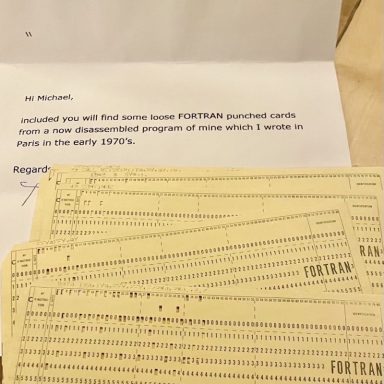Basic Information
Title: P-026-A Inversion Logique (Logical Inversion)
Artist(s):
Manfred Mohr
Date Created: 1970
Unframed Dimensions: 11.75 x 9.75 in.
Medium: Benson plotter drawing on paper
Inventory ID: Mohr-1970-03
Description
signed and dated in graphite lower right
“Tape 1, 102” written in graphite lower left
hardware: CDC7600
software: Program 21 with FORTRAN
output machine: Benson Plotter
The elements are horizontal, vertical, 45 degree lines, square waves, zig-zags, and have probabilities for line widths and lengths. The algorithm places elements in a horizontal direction and has a high probability to move from left to right and a limited probability to backtrack. The original idea of this algorithm was to create a visual musical score which defies the progression in time by occasionally turning back on itself. Thus at the same time an abstract text is created.


